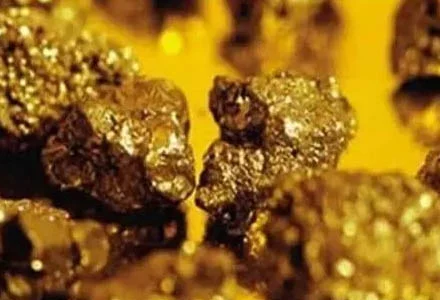Description
The Surprising Power of Gold: Not Just Shiny, But Catalytically Mighty
Gold. The word conjures images of glittering jewelry, ancient treasures, and financial security. But beyond its aesthetic and monetary value, gold possesses a hidden superpower: acting as a highly effective catalyst. This may seem counterintuitive – gold is traditionally known for its inertness, its resistance to corrosion and chemical reactions. However, groundbreaking research over the past few decades has unveiled the remarkable catalytic capabilities of gold nanoparticles, holding immense potential for a wide range of applications, from pollution control to drug discovery.
Breaking the Inert Myth: Gold’s Catalytic Awakening
For decades, gold was relegated to the sidelines in the world of catalysis. Its reluctance to readily react with other elements painted it as an unsuitable candidate. However, two key factors shattered this perception:
- Nanosizing Matters: When gold is reduced to nanoparticles (typically 1-10 nanometers in diameter), its electronic structure undergoes significant changes. This creates active sites on the surface where molecules can bind and react, effectively transforming gold into a powerful catalyst. The increased surface area to volume ratio of nanoparticles further amplifies their catalytic potential.
- Support is Crucial: The performance of gold nanoparticles is heavily influenced by the supporting material on which they are deposited. Different supports can modify the electronic properties of gold, enhance its stability, and facilitate the transport of reactants to the active sites. Common supports include metal oxides like titanium dioxide (TiO2) and cerium oxide (CeO2).
Gold’s Catalytic Portfolio: A Diverse Range of Applications
The catalytic prowess of gold nanoparticles has unlocked a vast and expanding array of applications across various industries:
- Environmental Protection: Gold catalysts play a crucial role in reducing harmful emissions from vehicles and industrial processes. They can efficiently oxidize carbon monoxide (CO) and volatile organic compounds (VOCs) into less harmful carbon dioxide (CO2) and water. They are also effective in removing nitrogen oxides (NOx), major contributors to smog and acid rain.
- Chemical Synthesis: Gold catalysts have proven invaluable in organic chemistry, facilitating a wide range of reactions with remarkable efficiency and selectivity. They can catalyze oxidation, reduction, and coupling reactions, enabling the synthesis of complex molecules for pharmaceuticals, materials science, and agrochemicals.
- Hydrogen Production: The quest for clean and sustainable energy sources has fueled research into gold-catalyzed water-gas shift reaction (CO + H2O -> CO2 + H2) and the selective oxidation of alcohols to produce hydrogen. These reactions are essential for generating hydrogen fuel for fuel cells and other applications.
- CO2 Utilization: Capturing and converting carbon dioxide into valuable products is a critical strategy for mitigating climate change. Gold catalysts are being explored for their ability to convert CO2 into fuels like methane and methanol, effectively closing the carbon cycle.
- Sensor Technology: The high sensitivity of gold nanoparticles to changes in their environment makes them ideal for developing highly sensitive sensors for detecting a range of substances, including gases, biomolecules, and pollutants. These sensors have applications in environmental monitoring, medical diagnostics, and food safety.
The Future of Gold Catalysis: Challenges and Opportunities
While the field of gold catalysis has made remarkable progress, several challenges remain to be addressed:
- Improving Stability: Gold nanoparticles can sometimes be prone to sintering (agglomeration) at high temperatures, reducing their catalytic activity. Developing strategies to enhance their stability remains a key focus of research.
- Lowering Cost: Gold is a precious metal, and its cost can be a barrier to widespread adoption of gold catalysts. Researchers are exploring ways to reduce the amount of gold required for effective catalysis, such as using bimetallic nanoparticles or optimizing the support material.
- Understanding the Mechanism: Despite significant advances, a complete understanding of the reaction mechanisms involved in gold catalysis is still lacking. Further research is needed to unravel the complex interplay between gold, the support, and the reactants.
Despite these challenges, the future of gold catalysis is bright. Ongoing research is constantly pushing the boundaries of what is possible, leading to the development of more efficient, selective, and stable gold catalysts. As we strive for cleaner energy, sustainable manufacturing processes, and advanced technologies, the surprising power of gold as a catalyst will undoubtedly play an increasingly important role. The shimmering metal, once considered inert, is now poised to transform various industries and contribute to a more sustainable future.












Reviews
There are no reviews yet.